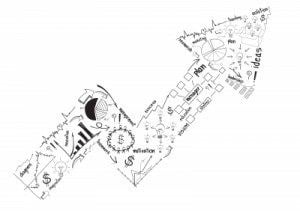5 Brands That Changed Their Business Model Entirely
As a way for businesses to continue to expand and generate money, introducing products or shifting an entire business plan may be the key.
Coke’s relatively new product, Fairlife Milk, reminded us: without risk, there is no reward. As a way for businesses to continue to expand and generate money, introducing products, or shifting an entire business plan may be the key. Although Coke will continue to stay true to their core products, for the time being, the expansion into a new beverage is hidden brilliance. Whether the product thrives or fails Coke is earning a tremendous amount of publicity. Here are 5 other brands you may not have realized have changed their business model and gone on to become some of the biggest brands in the world.

Tiffany and Co.
Most of us can identify one of Tiffany’s signature blue boxes from a mile away. And typically, unless you’re the recipient, that blue box will create envy knowing there is likely a stunning piece of jewelry inside. Would it surprise you if the next time you opened up a blue box rather than diamonds you saw stationary? Yes, it’s true. Tiffany’s started out as a stationer before making the transition into luxury jewelry.
Avon
This international beauty company comes from significantly different beginnings. David McConnell, the creator of Avon, was originally a door-to-door used book salesman. How do used books and beauty become intertwined: through a crafty marketing ploy. McConnell gifted samples of perfume to ladies so they would readily open the door for him. As it turns out the market was more interested in beauty than knowledge.
Abercrombie and Fitch
Now known as one of the most popular brands for adolescents Abercrombie and Fitch, it’s hard to imagine the original stores actually specialized in sporting goods. The early company was specifically notorious for carrying expensive shotguns, fishing equipment, and tents.
Reading Railroad
Have you played Monopoly before? If you have, you may recall a “lucrative†card to have in your possession is the Reading Railroad. This board game staple is an actual company called the Reading Company, however not one you’d expect. Yes, Reading Railroad originally was a rail company, but as of the late 1980s the company’s assets were liquidated and used to finance a cinema chain in Puerto Rico, Australia, and New Zealand.
Nokia
It may be a stretch to think that one of the leading brands for mobile communications opened up shop in 1865, but it’s true. Nokia originally was a paper mill in Finland and endured several mergers and acquisitions throughout its lifetime. Now the similarities between the company’s humble beginnings and current empire are impossible to identify






